|
2018,04,01, Sunday
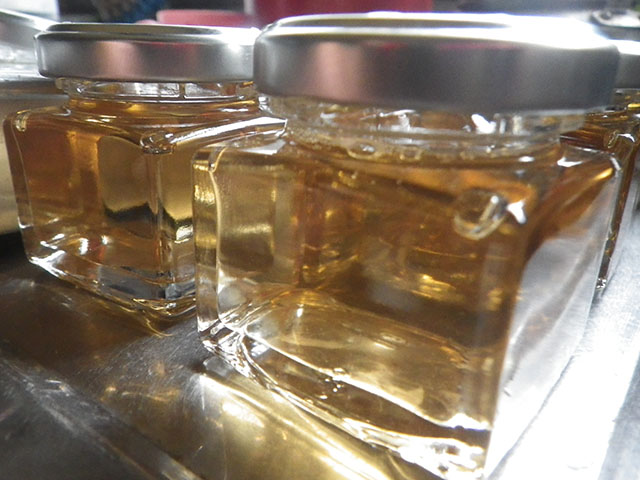 We, Makasa and I have finally finished bottling and labeling the Maple syrup - the process began in Jan. 2017, yes, it has been such a long project! The idea just popped out from the conversation with one of our neighbors: that I take charge of boiling the dilute maple sap into concentrated syrup - the most difficult and time taking in the process. I had heard that it's quite a tough job because the dilute liquid is supposed to be concentrated into 1/50 so that the sugar content would increase from less than 1% to 55%!! Suddenly, another opportunity of a new world had come - maple syrup making. Then, why not take up the challenge? This is how a new story began.  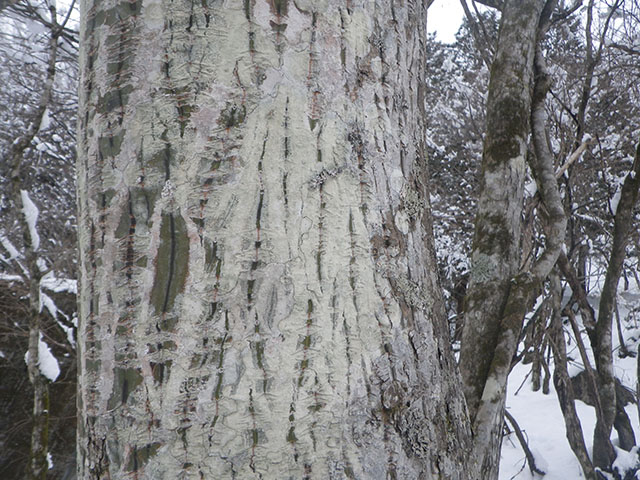 The neighbor, who had suggested and instructed me from scratch, told me that he wished he could take care of all the processes by himself, that is from collecting maple sap, boiling it down, bottling, labeling and selling. But it seemed that he wouldn't have such time for all that this year, except collecting. However, he is the one who had learned and brought the idea of maple syrup making to this area, so he just couldn't give up making it even if he was very busy. Okay then, let me try. To begin with, Makasa and I followed him to a snowy mountain to set up instruments for tapping the pure maple sap/ These instruments are quite simple and very much hand-made. The idea is also quite simple - to make a shallow hole with a drill, insert a tube to lead the liquid into a bottle attached to the other side of the tube. The amount of liquid flow totally depends on each tree, so we went to check and exchanged the bottle almost every day or once in a couple of days, which became indeed a great daily activity for me and Makasa! 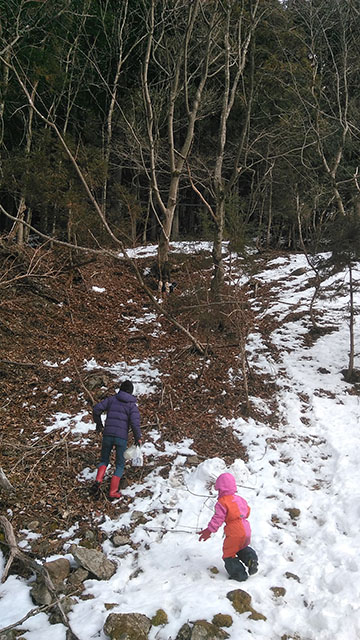 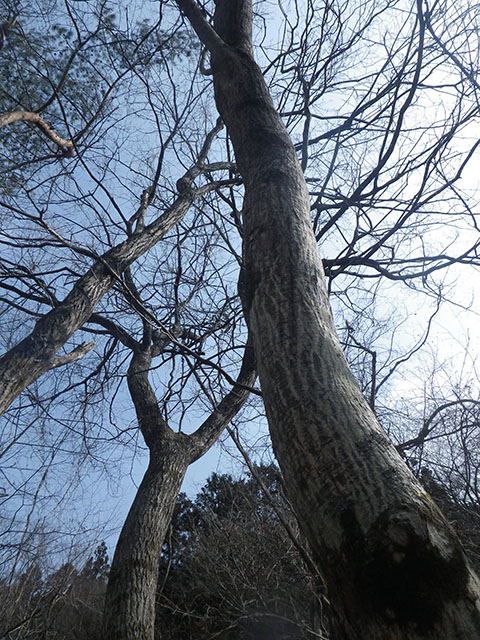 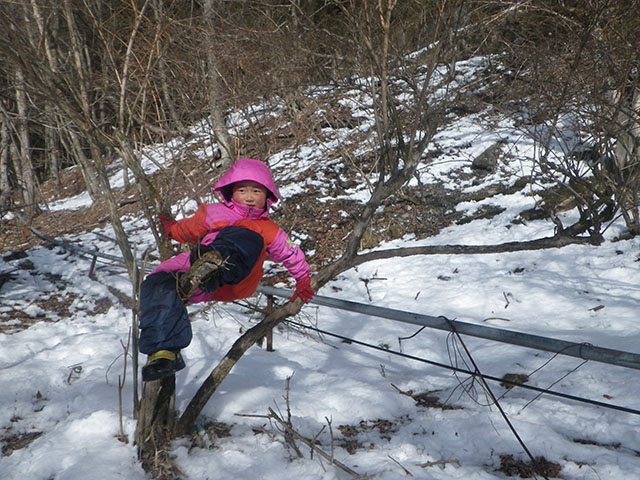 The thing was that maple trees were not in one place, but among many other trees on a mountain, it took time for me to recognize the pass to reach our target trees. Snow covering a mountain was helpful because we could follow our own foot steps that were made on the previous day. It was fun walking around in the mountain with a mission, but it was so cold - well, it is said that we can have the bounty of maple sap only for a short period of time, that is for about two weeks, during the coldest season, and ideal temperature is neither too cold nor too warm, that is around 5 or 6 degrees C. When it was too cold, we found that the leaking sap had become a sweet icicle, and Makasa enjoyed eating it! During the weekend, we took a whole family, sometimes friends and visitors as well, to our daily maple-walk. They also enjoyed climbing up the hilly terrain to reach maple trees, dreaming of tasting the yummy-yummy syrup later. So, as soon as we brought the sap back home, the next step was to boil it to avoid oxidizing and spoiling the liquid. We arranged a huge gas burner and cauldrons for that. It must have been more economical to build a fire outside for boiling, but this year I decided to try with a gas burner inside house because I was not sure how long it took, and also being with curious and active Makasa, I was not confident of being able to watch the fire for too long. However, using gas inside the house whenever I found time was very beneficial to us unexpectedly - it warmed and humidified our room very very well! We didn't use any gas heater stove at all thanks to this maple syrup project, ha! 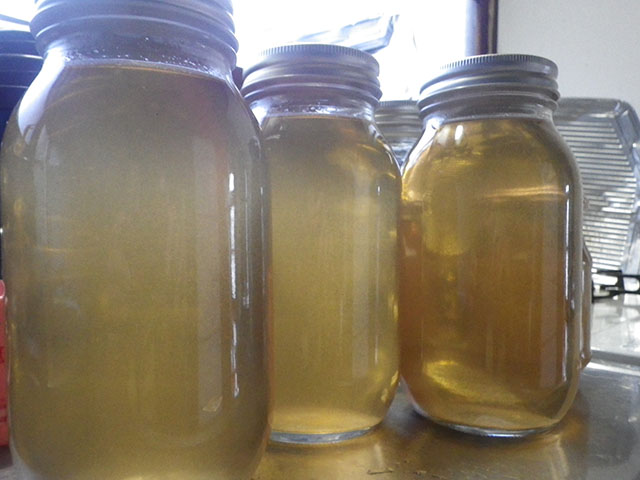 So, now it's already spring. No more snow on the mountain, and it's time to bottle and label for selling. This time, 120 bottles of 40ml and 12 bottles of 140ml were ready out of nearly 300ℓ of dilute maple sap! Japanese maple syrup is much different from what we usually find at shops, that are mostly made in Canada. Ours taste more delicate and mild - and is more expensive; considering all the hand-made processes and time taken, the price is convincing though! We are happy if many people enjoy and appreciate our maple syrup. But more than anything, we are grateful to natural maple trees and our neighbors who gave us this precious winter opportunity. This was how we could enjoyed the first Narada winter with a lot of fun. 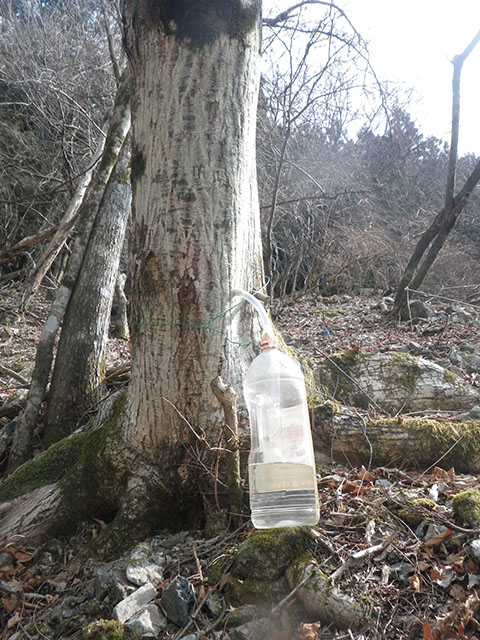 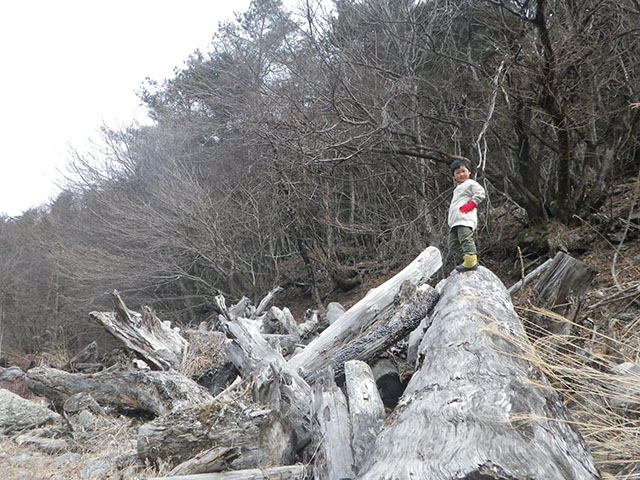 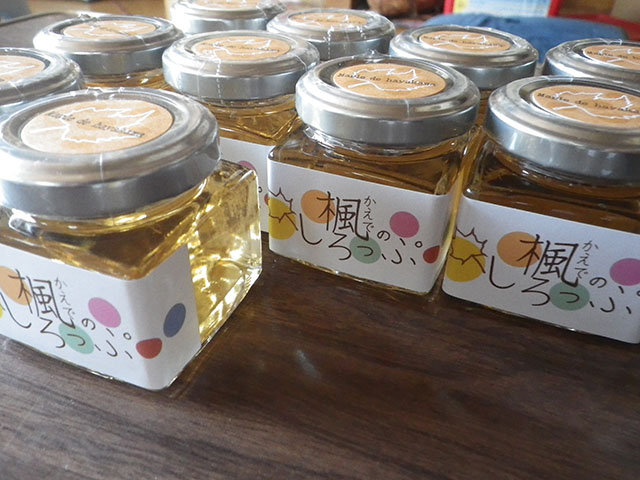 Wakana どうぞよろしく、カエデの樹! メープルシロップの瓶詰とラベル貼りをついにやり終えました。ノートを見返せば、始まりは去年の1月。私と(ま)の、長い冬の一大プロジェクトとなりました。 「今年もメープルシロップの時期がきたぞ。今回、煮詰め作業をやってみないか?」それは、ご近所さんとのいつもの会話から出てきた話。樹液を集めてくるのは数人でやって、それをまとめて煮詰めてくれないか、ということのようです。話しには聞いたことがあったんですが、原液を煮詰めて煮詰めて50分の一まで凝縮させて、1%にも満たなかった糖度を55度にまでもっていくのだそうです。えっと、私にもできるのかな。いや、こんなチャンス逃しちゃいけない!と何はともあれやってみることに。この始まり方は、全くいつもの通りですね。 発案者であり、今回ゼロから全て教えてくれた近所のMさん。天然のメープルシロップ作りを習ってきて、この地域でもやってみようと始めた張本人。本当は原液集め、煮詰め、瓶詰、ラベル貼りから販売まで、全部自分でやりたいところなのだけれど、どうしても原液集めの時間しか取れないことが見えてしまったとのこと。今年は中止、というわけにもいかず、どうにか今年も実現したかったシロップ作りだったそうです。そういうことなら、やはり毎日遊んでいる私と(ま)が適任か・・・? そうと決まれば、まずは原液採集の仕掛けを設置すべく、雪の積もる林の中へ。雪遊び用の完全防寒で、Mさんの後について林に入ります。仕掛けといっても、見てびっくり、案外シンプルなもので、ドリルで数センチほど開けた穴に、40センチほどのホースをグッと差し込むだけ。ホースの差込口には、密接するようにビニールテープを巻いておきます。ホースの反対側の口は、くくりつけたペットボトルへ入れておきます。あとは、ペットボトルの口の隙間からゴミや虫が入らないように、ガムテープでぐるりとカバー。・・・以上でした!見ると、すでにホースを通って、ポタンポタンと樹液が流れてきています。どれだけのペースで樹液を集めることができるかどうかは、一本一本違うそうです。イタヤカエデやウリハダカエデといった木の種類や、樹齢、枝の張りぶり、気温など、色々な要素で決まるのだとか。確かにある木カエデは、毎日行くたびに1.8リットルのペットボトルがいっぱいになっているのに、他のカエデは、半分にも満たなかったり。ペースをつかむためにも、ひとまず毎日様子を見てボトルを交換することにしました。これがまた楽しい散歩で、私と(ま)の冬の日課となりました。 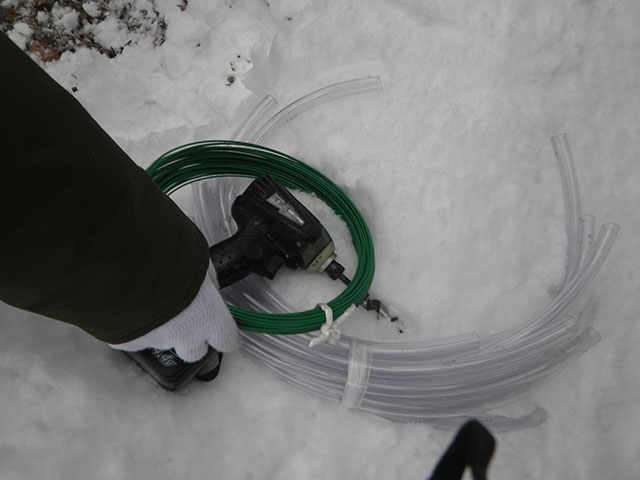 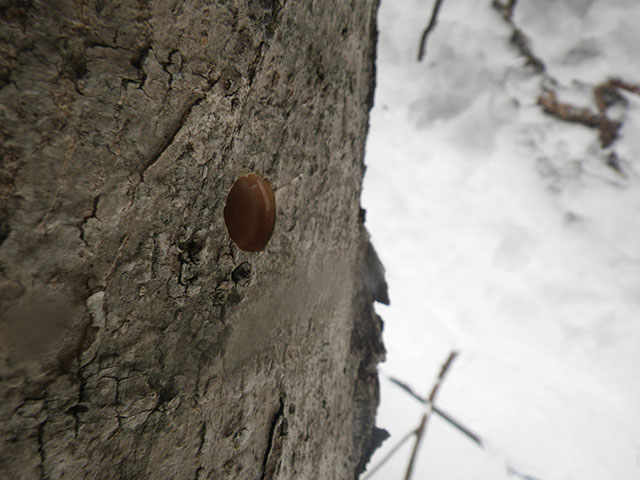 自然に生えているカエデの樹なので、林のあちこちにあります。なので始めのうちは、お目当ての樹にたどり着く道を覚えるのが大変でした。そういう時は、厚く積もった雪が大活躍で、前日の自分たちの足跡を辿っていけばたどり着けました。寒くても、目的をもって歩き回る雪山散歩はなかなか楽しいものです。そう、寒いからこそ恩恵に与れるカエデの樹液。なんと、極寒のこの時期、2~3週間の間、しかも気温も低すぎず高すぎず、5,6度の時にしか採集できないのだとか。寒すぎる日には、ホースや穴から少し漏れた樹液が甘いツララとなってぶら下がっています。息を上げて山を駆け上ってきている(ま)は、それを嬉しそうにポキンと折って食べていました。 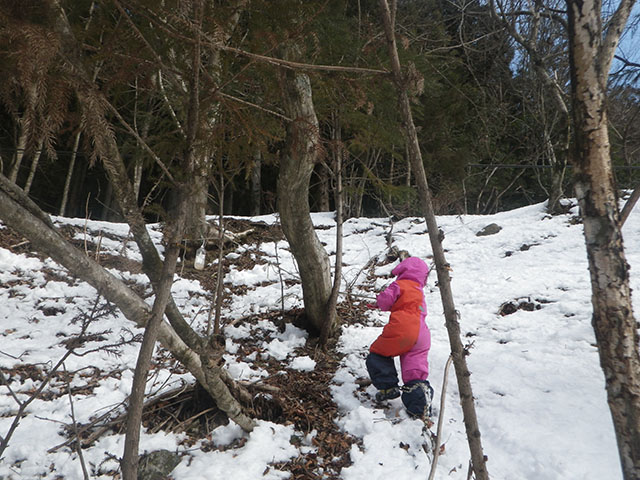  週末で皆がいる時は、家族そろって樹液採集に繰り出したりもしました。友人や来客がいる時は、その人たちも一緒に。甘くて美味しいメープルシロップを夢見ながら、雪山の斜面を一緒に登って行きました。 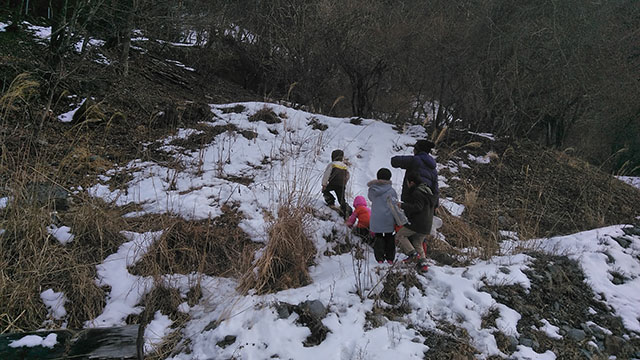 そうしてちょいちょい集めた樹液は、酸化を防ぐためにできるだけすぐに一度沸騰させます。そのための大きなガスバーナーや大鍋も用意して、ひとまず一気に沸かします。外で火を炊いた方が経済的なのはそうなのですが、何しろ初めての試みで様子が分からないこと。また、どこに駆け出していくか分からない(ま)も一緒にいることなので、長時間火の番が出来るとも限りません。ということで、ひとまず今年はガスで室内での試みです。ところがこれが、思わぬ副産物がありました。大鍋を朝からずっと、食事の間も家事の間も炊いているので、その熱と湿度の高いこと!なんとこの冬、灯油ストーブを出すことなく過ごしてしまいました。 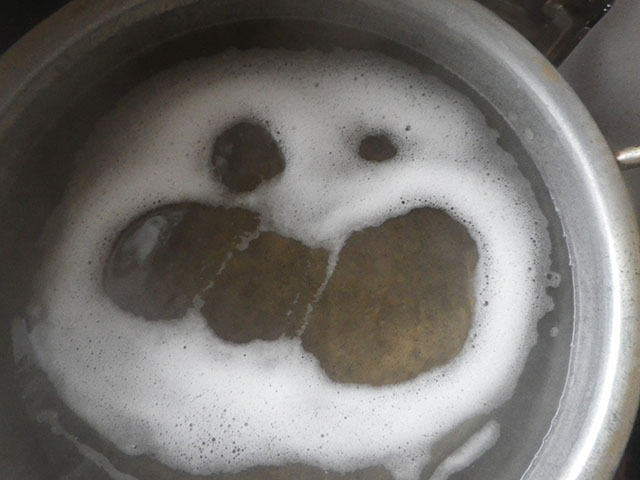 そして、早やもう春の到来。山には雪もありません。瓶詰とラベル貼りを終えて、販売の準備もできました。40mlが120瓶、そして140mlが12瓶。煮詰めた原液はなんと皆の分を合わせて全部で300リットルほど。日本のカエデで作るシロップは、よくお店で目にするカナダ産のシロップと様子が全く違います。値段も高いですが、味もなんというかより繊細で、やさしい感じに思います。値段が高いといっても、この全工程手作業なことや煮詰めにかかる時間などを考えると納得ではあるのですが、でも何よりこのシロップ作りの工程の楽しいのなんのって。商売のためだけでは、できない仕事だなぁ。樹液を採らせてくれたカエデの樹にも、この冬の初挑戦を指導してくれたMさんにも感謝です。こうして、初めて迎えた奈良田の冬は、わくわくとカエデと共に過ごすことができました。 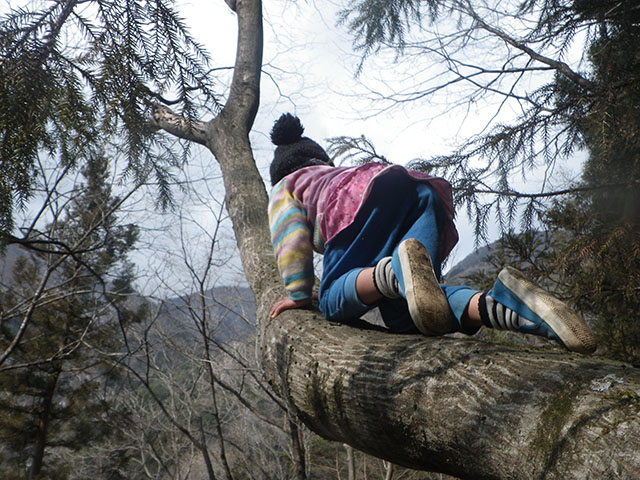   (わ) | カテゴリ: どれみ |
|
